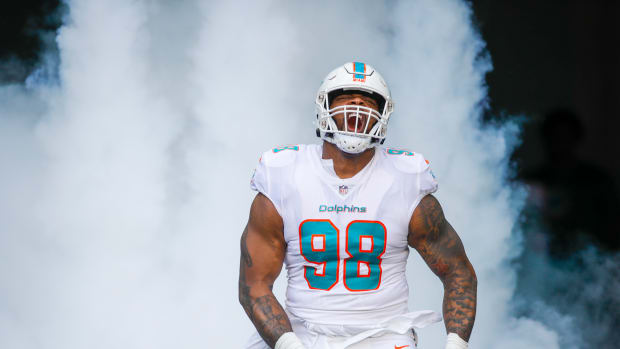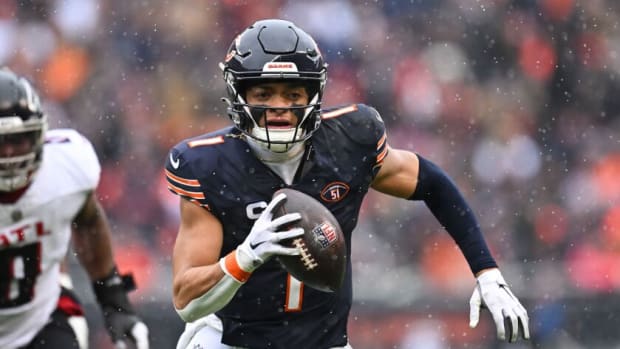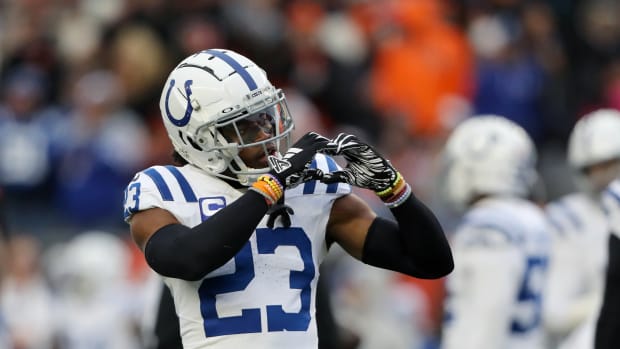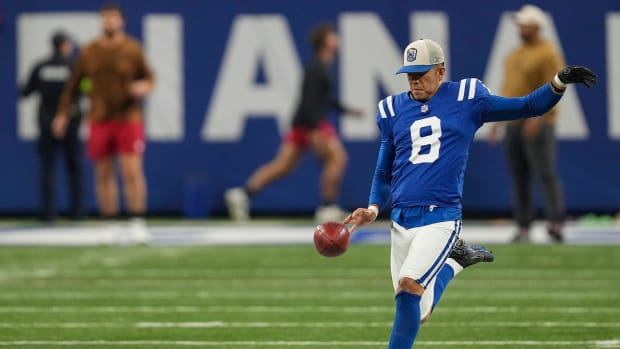How Colts’ Philip Rivers Measures Quarterback Success
INDIANAPOLIS — For starters, Philip Rivers’ first objective which defines being productive as an NFL quarterback is obvious.
Win.
After that, there are various statistics which factor into how well the 17th-year pro is playing the position for the Indianapolis Colts. Rivers went into detail about what numbers matter most in a Wednesday Zoom video call.
“I do think it starts with winning,” said Rivers, 38. “I’ve always thought, shoot, our job as an offense is to score one more point than the other team. If our D gives up two, we’ve got to find a way to get three. If they give up 35, we’d better get 36. I just think that’s the simplest way to look at it from a win-loss standpoint offensively, big-picture wise.”
Looking at his position specifically, he mentions minimizing turnovers.
“That’s the first thing,” he said. “Shoot, if you turn it over three or four times, it’s already not been a good day. I think not turning the ball over, and completion percentage, yes, because I think if you’re throwing completions, especially to the guys we have that are on the other end of it, then you’re probably getting first downs and moving the ball and doing the things you need to do to get in the other end zone. Those are the first things that come to mind.”
Rivers had 20 interceptions in his final season with the Chargers, which is probably one of the reasons he became available as a free agent. But Colts head coach Frank Reich and offensive coordinator Nick Sirianni watched the film and came away convinced that Rivers still has the arm strength to make the throws and he gets rid of the ball quickly because he has so much experience in recognizing every defensive scheme thrown at him.
(Check out Horseshoe Nation’s premium page)
On a 5-11 team last season, Rivers had a 65.9 percent completion percentage. He’s averaged 64.6 percent in his career. His highest was 68.3 percent in 2018, when he went to his eighth Pro Bowl.
“Definitely yards per attempt is important,” Rivers said. “If you’re completing a high percentage of your passes and your yards per attempt is up at 7.5 or 8 yards, that could be saying 70 percent of the time you’re gaining 8 yards a clip and you’re not turning it over, those things are certainly winning football from an individual standpoint as far as how you look at yourself critically.”
Rivers averaged 7.8 yards per attempt last season, and his career number is 7.4 yards per attempt. He’s been above 8 percent five times, including a career-best 8.8 yards in 2009. Just two seasons ago, that number was 8.5.
(Check out all 32 NFL Team Previews by Sports Illustrated)
The past two seasons, no NFL quarterback had more check-down throws than Rivers’ 121. He likes to throw to running backs in space to isolate defenders. His role in assisting pass-catchers to gain more yards after the catch is also key.
“Certainly the guys on the receiving end have got to have that ability to catch it and do something with it,” he said. “They have to have that skill, certainly. I do think that’s been one of the couple of things that I’ve done well that’s allowed me to play as long, get the ball out quick and be accurate for the most part. Certainly not all the time, but that’s been a good attribute of mine, is get the ball out of my hand quickly, which allows those guys to get it with room to do something with it, and then do my best to deliver it in an accurate spot that allows them also not have to make too many adjustments, just catch the ball.
“Getting it out quick is one thing. But you also don’t want to be back there in a hurry to get it out when you don’t have to. Just go through the natural progression. Some of that comes with experience, when a guy might be fourth in the progression but you get to him on your first hitch just because of I think some of it is experience, how many times you've seen the play and played the coverage, you’ve played, played, played, so you get to the back or you get to the third guy a little faster, which therefore allows him to catch and run with it as opposed to hanging on until the last second, then you throw the checkdown and they’re getting blown up.”
(Phillip B. Wilson has covered the Indianapolis Colts for more than two decades and authored the 2013 book 100 Things Colts Fans Should Know & Do Before They Die. He’s on Twitter @pwilson24, on Facebook at @allcoltswithphilb and @100thingscoltsfans, and his email is phillipbwilson24@yahoo.com.)




